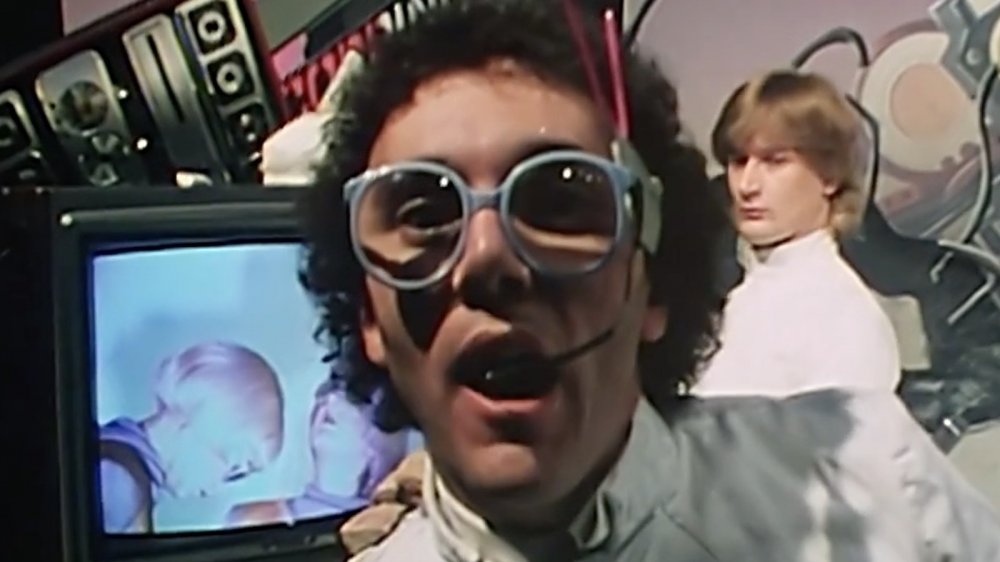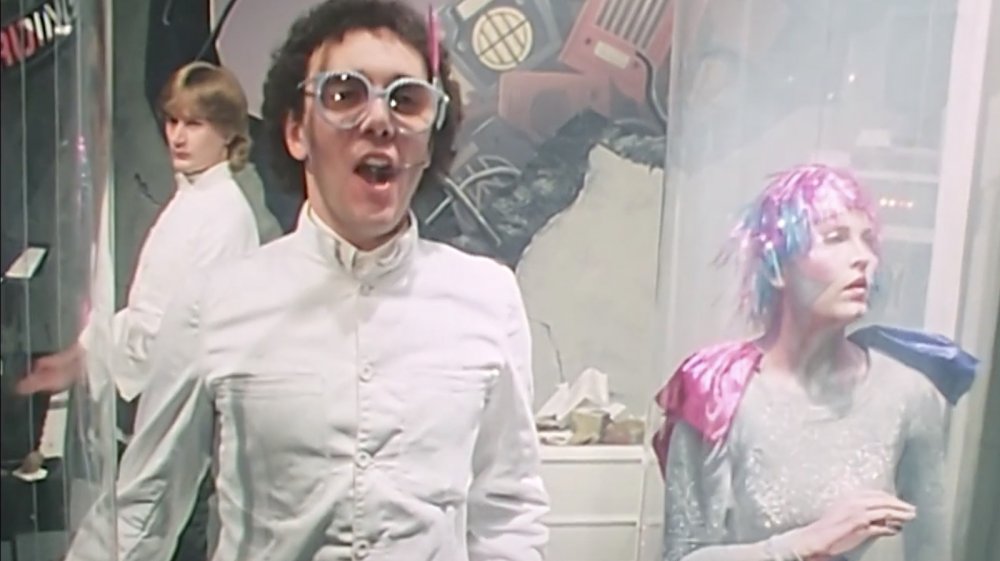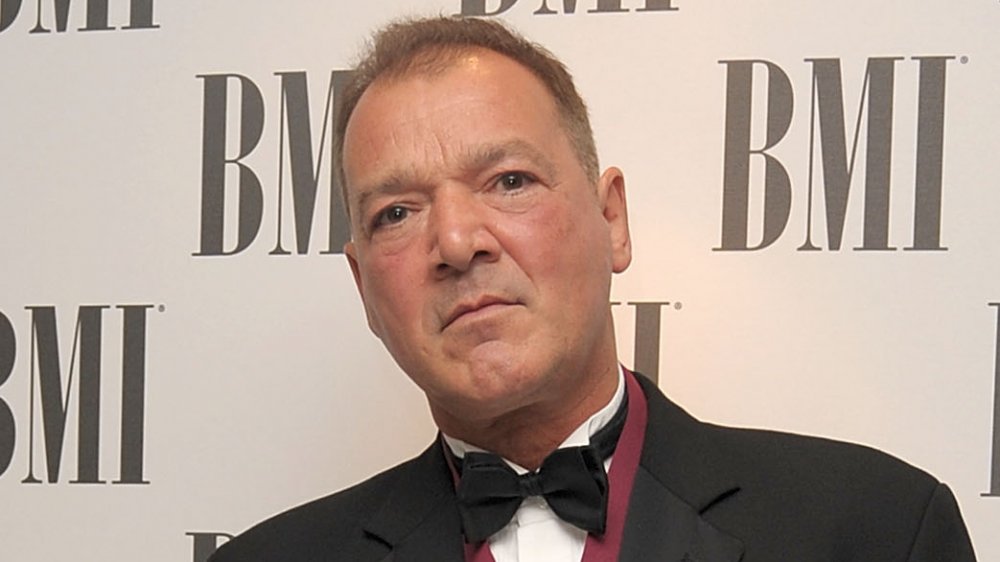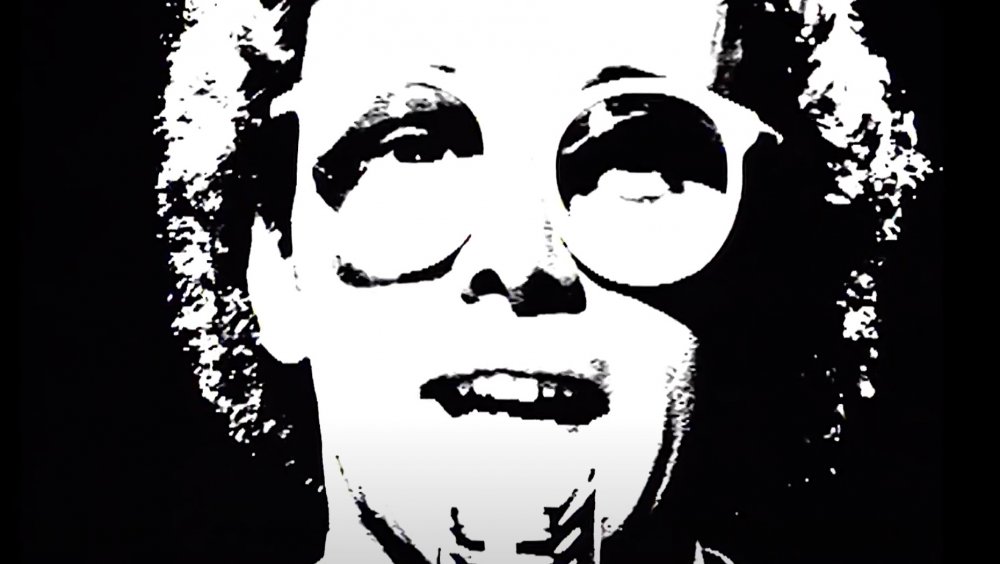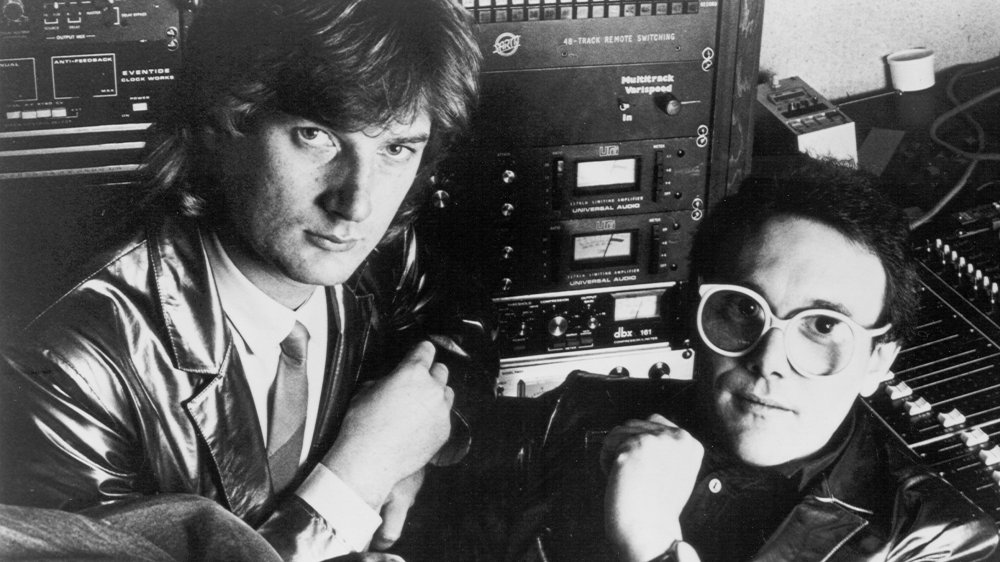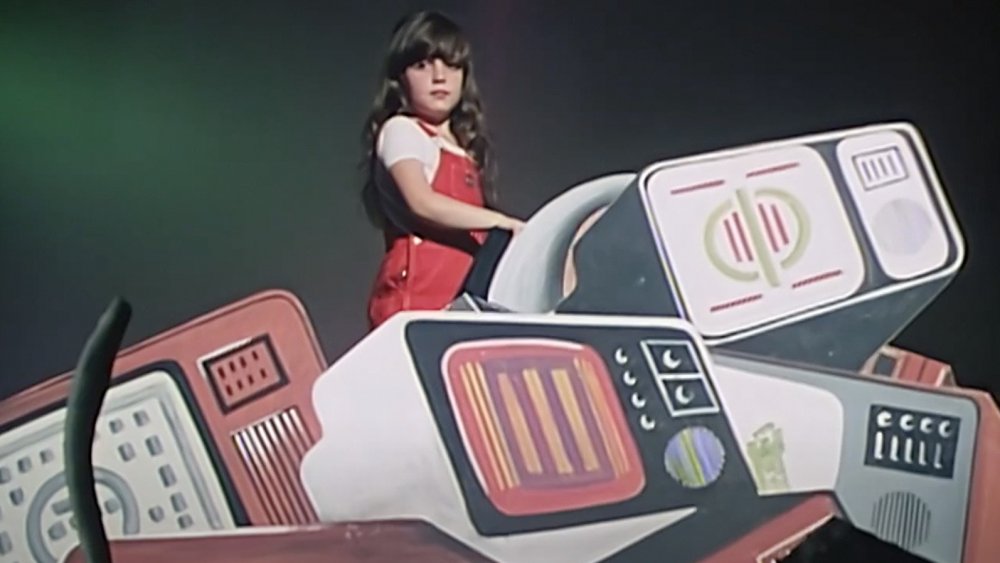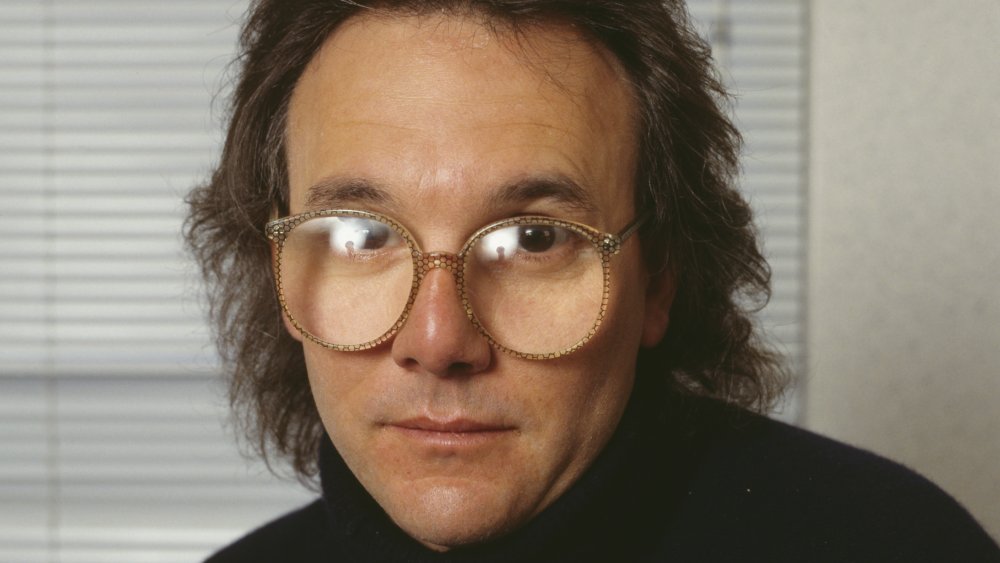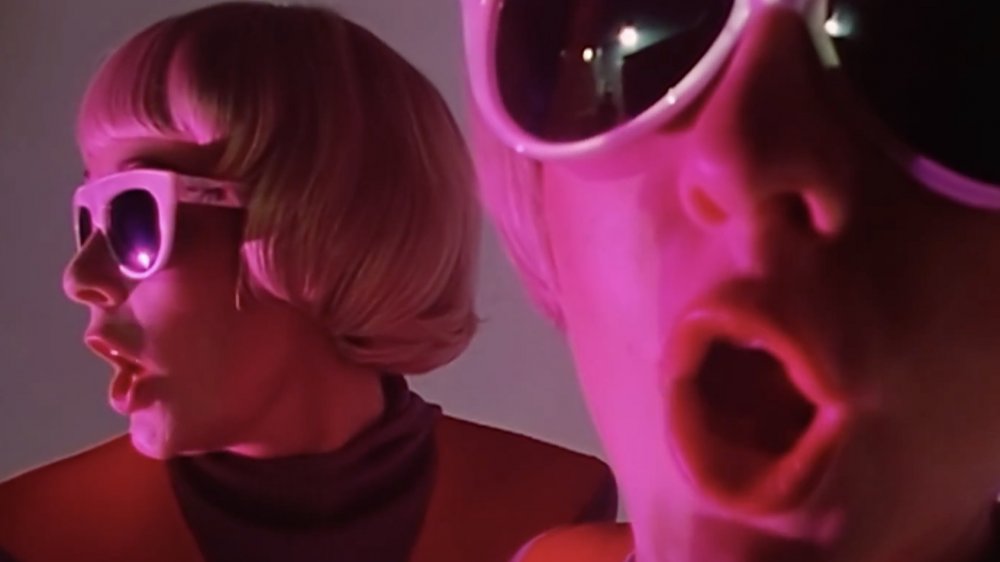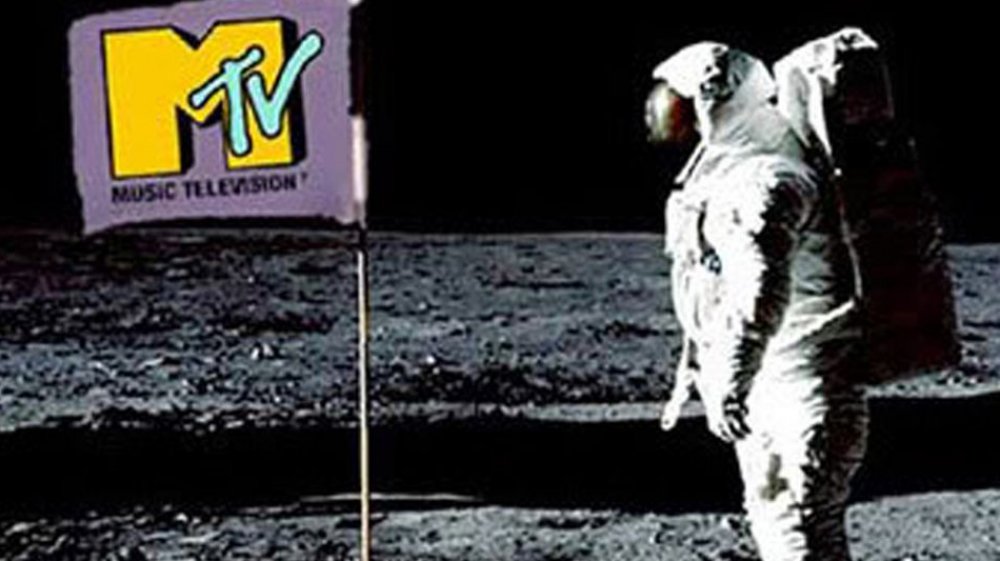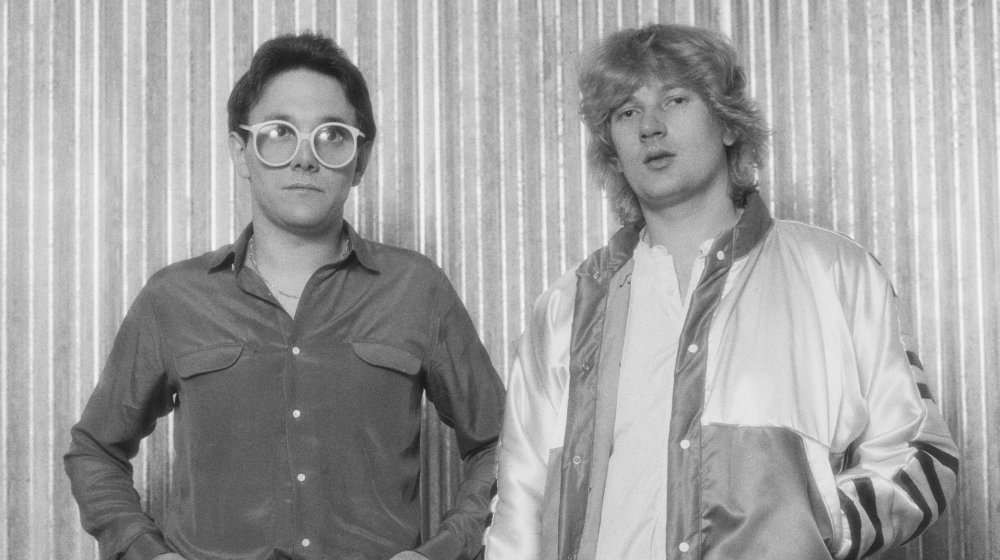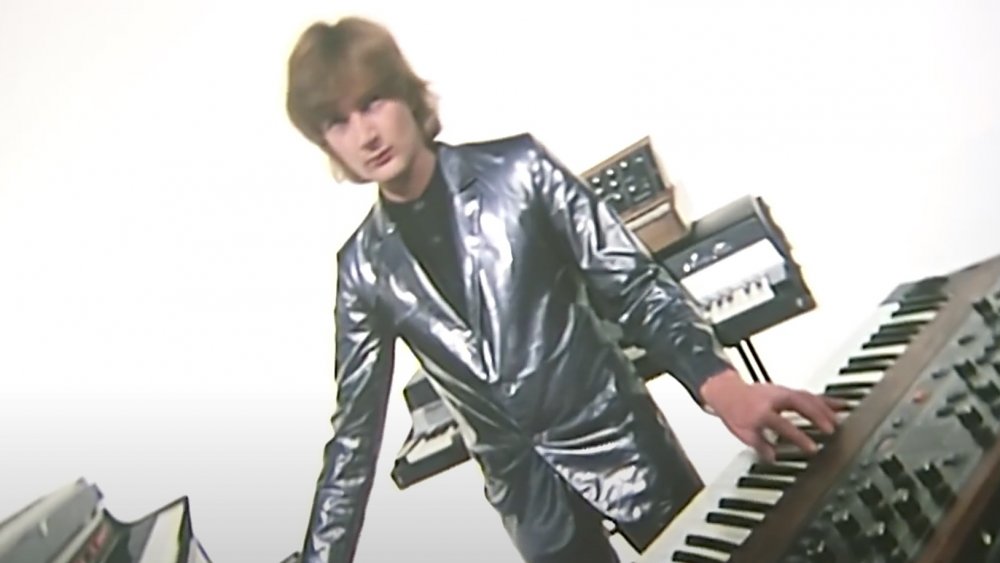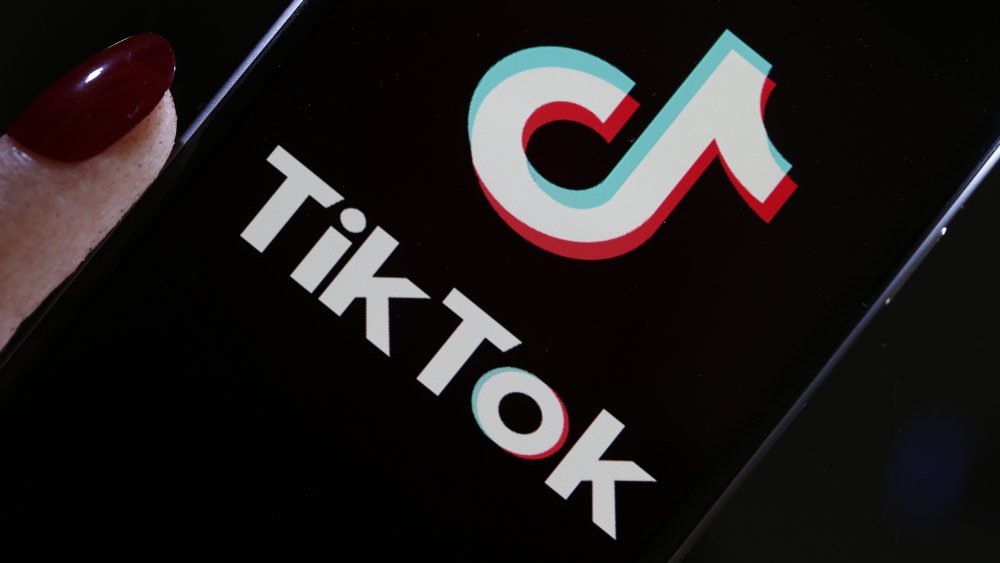What It Was Really Like To Be The First Music Video On MTV
Music and television changed forever just after the stroke of midnight on August 1, 1981, when the two collided in a big way. It was at that moment that Music Television — MTV — began broadcasting over America's nascent cable television systems. Music videos — miniature movies and performance clips built around pop act and rock band singles — soon became a vital part of a musician's marketing plan and suite of self-expression, thanks to this new network. MTV attracted millions of viewers, primarily young people, who couldn't get over the novelty of seeing and hearing their favorite bands at the same time from the comfort of their homes.
The very first music video played on MTV, appropriately enough, was the clip for "Video Killed the Radio Star," a late '70s single by the Buggles, a British New Wave duo with a futuristic sensibility. Here's the story of how the Buggles — Trevor Horn and Geoff Downes — conceived the song, made the iconic video associated with it, and helped make MTV one of the biggest cultural institutions of the 1980s and beyond.
"Video Killed the Radio Star" was only the third song the Buggles wrote
By the mid-1970s, work-for-hire English bassist Trevor Horn had moved into production and opened a studio. He was tasked with putting together a touring band for his girlfriend at the time, pop singer Tina Charles. Geoff Downes, the "14th keyboard player" Horn told The Guardian he'd auditioned, along so well with Horn musically that they decided to start a band together, bringing in guitarist Bruce Woolley on the recommendation of a friend. The trio started jamming and wrote some music together, ultimately finding their stride with "Video Killed the Radio Star," the third song they composed. Soon thereafter, Woolley left the burgeoning band when he got a solo recording contract, leaving Horn and Downes to continue on as a duo, calling themselves the Buggles.
The band's philosophy tied in closely with that of the culturally dystopian "Video Killed the Radio Star." Horn said he "had this vision of the future where record companies would have computers in the basement and manufacture artists." He thus envisioned the Buggles as an anonymous "robot Beatles" but took the band's name from when he was outfitted with a pair of oversized glasses that made him seem bug-eyed, or rather like a "Buggle."
A jilted Buggle tried to take ownership of "Video Killed the Radio Star"
The Buggles — bassist Trevor Horn and keyboardist Geoff Downes — knew they had something special with "Video Killed the Radio Star" and recorded their demo of the song at Downes' apartment in the Wimbledon Park area of London. Horn's girlfriend, popular British singer Tina Charles, took vocals on the project, but the star power didn't help — the Buggles were rejected by several record labels.
Eventually, Island Records heard the demo (Downes' girlfriend at the time worked there) and signed the band. However, executives didn't like the specific way that Horn and Downes had recorded "Video Killed the Radio Star." "We had to rerecord it and change the arrangement," Downes told The Guardian. "I wrote a different intro and middle eight, and we extended the verses. We stayed up for nights experimenting with different sounds."
Meanwhile, Bruce Woolley, who'd made an early exit from the group that became the Buggles, apparently came to regret his decision. Getting wind of his former bandmates' record deal, he recorded his own version of "Video Killed the Radio Star" to get a jump on the Buggles' take. "But it wasn't a hit," Downes said.
"Video Killed the Radio Star" was a hit everywhere but the United States
Today, "Video Killed the Radio Star" the song is inexorably linked with the music video made to promote it — it's the answer to a trivia question, as it launched the indelible and important MTV back in 1981. But for a two-year period, "Video Killed the Radio Star" was far better known as just a song, a New Wave chestnut by an act called the Buggles that made major pop chart runs around the world. In September 1979, "Video Killed the Radio Star" spent a week at #1 on the singles chart in the Buggles' native United Kingdom. Right about that time, the song hit big all around the world — "Video Killed the Radio Star" topped the localized pop chart in Ireland, Italy, Switzerland, France, Sweden, and Austria. It arguably did the best in Australia, where it not only hit #1 on the hit parade but remained the most successful single in the country for nearly three decades.
About the only Western nation where "Video Killed the Radio Star" wasn't a monumental hit song was the United States. On both of the country's big charts of the day, the Cash Box Top 100 and the Billboard Hot 100, the Buggles song reached a peak of #40. Had MTV not revived the song in 1981, the Buggles would've been rendered a forgotten relic: a New Wave one-hit wonder.
The Buggles made the video to get out of performing live
MTV didn't invent music videos — it was merely the first channel to play them all the time. The concept of short, promotional music clips grew throughout the 1970s, to the point where a channel playing them was justified, but there still weren't all that many. Upon the day it launched in 1981, MTV had a library of a few dozen videos.
According to I Want My MTV, rock acts started making short films of themselves performing their hit songs to be played on the English music show Top of the Pops, which dictated that the act with the #1 song in the country show up and lip-sync to their hit. Bands realized that they could just send in a video instead. This appealed to British duo the Buggles, who made a video for "Video Killed the Radio Star" to avoid touring. "We were not a live band," Buggles member Geoff Downes told People. "We were studio boys."
The "Video Killed the Radio Star" shoot was chaotic and expensive
The Buggles made its clip for "Video Killed the Radio Star" in 1979, an era when music videos were not particularly expensive or ambitious. For example, the video for the #1 song of the year, the Knack's "My Sharona," consists of the band playing on an unadorned soundstage. The Buggles went all out, crafting a short film shot on a specially constructed laboratory set with actors in elaborate costumes serving an abstract narrative thread that went along with the themes of the song.
According to I Want My MTV, the video took a day to shoot at a London studio. In addition to the Buggles, future Oscar-nominated composer Hans Zimmer appears in the video, as does an actress hired to play a confused, flying woman. "I had a good friend who was trying to break into acting," director Russell Mulcahy (who'd later helm videos for Elton John and Duran Duran) said. "I told her I needed a girl to dress in a silver costume and be lowered via wires into a test tube." That shot took around 30 takes, and the one that made it into the final cut has a mistake — the test tube wasn't supposed to fall over.
According to People, the video cost a staggering (for the time) $50,000. It was even mildly controversial. After it aired on music shows, Zimmer said some viewers complained that it was "too violent because we blew up a television."
A Buggle met his wife because of "Video Killed the Radio Star"
Long before "Video Killed the Radio Star" was a famous music video, it was a single, and before that, it was just a demo recorded by an unsigned band called the Buggles. "I didn't quite know what to do with it," Trevor Horn said of the tape to The Independent. He'd previously done some production and mixing work at Sarm East Studios, founded by Jill Sinclair, and one day in the late '70s, she invited him to watch a video shoot. That's when he played her the demo. "I could tell she was really impressed because she spent the next three months trying to sign me up."
However, despite many meetings in which Sinclair tried to sign the Buggles to her label, Horn and partner Geoff Downes went with Island Records, which offered too much money for the "broke" Horn to turn down. "Jill was upset," Horn said, but then she asked him out. They got married in 1980, by which point "Video Killed the Radio Star" had gone to #1 in the U.K. "I thought it was the perfect pop song and still do," Sinclair told People in 2001. "It had more hooks than a fisherman's net."
An executive didn't want MTV to start with "Video Killed the Radio Star"
One of the handful of pre-existing music videos MTV had in its possession when it began broadcasting was the one for the "Video Killed the Radio Star," a 1979 single by the Buggles that barely made it into the top 40 of the American pop chart and had been mostly forgotten by the masses by the summer of 1981. That's a big reason why, despite its strong and deeply appropriate message about the age of visuals leaving the audio-only past in the dust, its accompanying video wasn't necessarily a shoe-in to win the honor of becoming the first content played on MTV.
"Nobody wanted to launch with 'Video Killed the Radio Star,'" MTV program director Steve Casey said in I Want My MTV. "They thought we had to play a hit. I said, 'Nobody's going to be watching. It's symbolic.'" Casey's argument prevailed, and MTV brass slated the video to be the first one it played. "It was too obvious not to do it," MTV's co-founder Bob Pittman said. "We didn't expect to be competitive with radio, but it was certainly a sea-change kind of video," he later told People. "Video Killed the Radio Star" was a little on the nose, but it worked.
The launch of MTV was disastrous
Only in retrospect is the birth of MTV something worthy of the pop culture history books. When the first-ever all-music-videos-all-the-time cable television network launched in 1981, it was a flop from a technical standpoint, full of glitches and errors that lent the proceedings a decidedly amateurish vibe. Shortly after John Lack uttered, "Ladies and gentlemen, rock 'n' roll," MTV showed some modified footage of the 1969 Moon landing, played its network theme music, and got down to business, airing the Buggles' clip for "Video Killed the Radio Star."
After that first video came MTV's first errors, in the form of accidental dead air and then some editing issues. "The VJs would announce, 'That was Styx,' right after we'd played REO Speedwagon," network executive Bob Pittman said in I Want My MTV. "They'd say 'This is The Who,' and a .38 Special video would begin. Everything that could have gone wrong did go wrong." One video didn't even air in full, interrupted by a loud beep, dead air, static, and a cut to a VJ.
On the bright side, a relatively tiny number of people saw all of this go down. Cable television wasn't yet a prominent source of entertainment, installed in just 18 million American homes in August 1981. At the moment it launched, MTV was available on just a few cable systems in New Jersey and Kansas, and it premiered in the middle of the night.
Making history for MTV didn't much help the Buggles
The Buggles recorded "Video Killed the Radio Star," one of the most prescient songs in pop music history, and was recognized for it when MTV selected it as its first video to air, forever linking the tune with a television juggernaut. And yet, this burst of fame didn't really do much for the Buggles. Despite being a part of a watershed moment in music history, and already being one of the most popular synth-driven New Wave bands of the 1980s in other English-speaking parts of the world, the Buggles never did break big in the United States. "Video Killed the Radio Star" topped the charts in the U.K. and Australia (and went to #2 in New Zealand) upon its initial release in 1979, but a chart re-entry in the U.S. never happened, despite all the attention it received.
The next three singles from the Buggles' debut album The Age of Plastic went unnoticed in America, too, as did all the singles from the next album, Adventures in Modern Recording, even though it had a timely, moment-seizing release in November 1981, just three months after the launch of MTV. According to People, by the time Adventures hit stores, the Buggles weren't even a band anymore — the group dissolved after members Geoff Downes and Trevor Horn joined the prog rock band Yes. By 1982, Downes had moved on to form Asia, and Horn became an in-demand producer.
"Video Killed the Radio Star" was part of other milestone TV moments
Thanks to the allure of a channel that played nothing but flashy rock videos all day and all night long (and an ad campaign featuring rock stars urging consumers to yell "I want my MTV!" at their cable companies), MTV rose to become a major outlet for all of youth culture.
Beginning in the late 1980s, the all-video format started to change, with regular TV shows added to the mix, but by 2000, in advance of its 20th anniversary, MTV's internal record-keeping revealed that the network was on the verge of airing video number one million. On February 26, 2000, per Salon, the channel celebrated a million videos with a special broadcast hosted by TRL favorite Carson Daly, who compared the 1981 creation of MTV to the Moon landing and the fall of the Berlin Wall. The one-millionth video to air was also the first video to air: "Video Killed the Radio Star" by the Buggles.
That clip is so associated with big MTV moments that other channels have adopted the tradition. When millennial-targeted cable network Pivot launched on August 1, 2013, (exactly 32 years to the day after MTV's debut), it did so with an airing of "Video Killed the Radio Star." And when MTV Philippines went off the air in 2010, it faded away with "Video Killed the Radio Star."
Streaming video didn't kill "Video Killed the Radio Star"
The teenagers and young people of the 2010s and 2020s have only vague recollections, if any, of the time when MTV's programming included a substantial amount of music videos. By 2000, just about the only song clips it played were the ones made by pop divas and boy bands for inclusion on TRL. Nowadays, music videos are available instantly online. The kids can see professionally made videos by singers, rappers, and bands on YouTube, not to mention musically based clips produced by amateurs on TikTok, where "Video Killed the Radio Star" has surprisingly and somewhat ironically turned into a very dark meme.
The Buggles' New Wave classic is employed as a device to accuse celebrities of murder or to implicate them in deadly conspiracy theories, according to The Daily Dot. For example, a TikTok user took a photo of President John F. Kennedy and placed the word "video" on top of it. "Radio star" appeared atop a picture of Marilyn Monroe, supporting the decades-old conspiracy theory that the president had the actress killed after their affair ended. In other words, video killed the radio star, it's stated, while the song of the same name plays in the background. Others who've died untimely deaths and received this TikTok treatment include JonBenét Ramsey, Madeleine McCann, and Heath Ledger, all "radio stars" theoretically killed by, respectively, her brother, her parents, and Mary-Kate Olsen.
